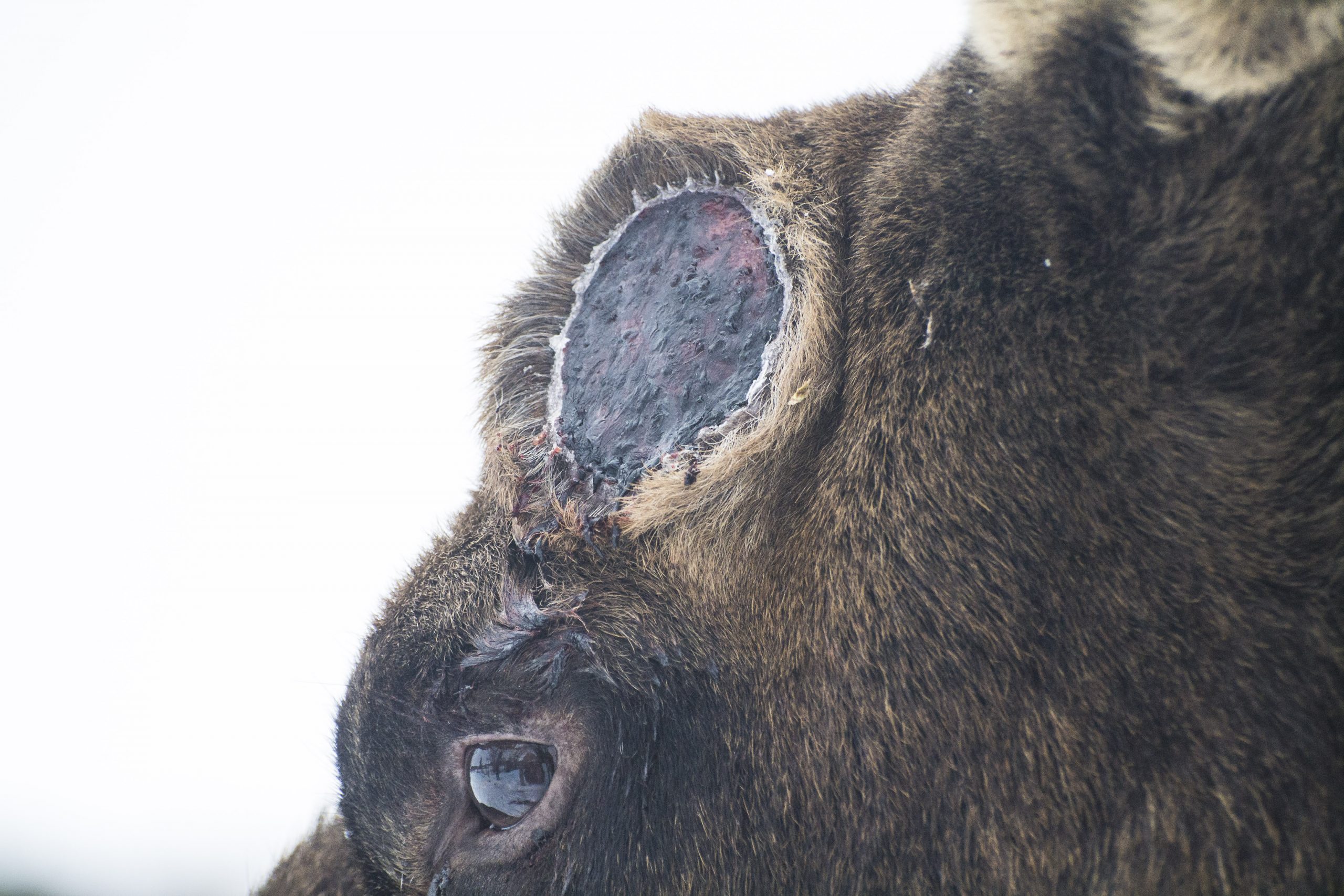
Swipe Right (for Antlers)
Only animals in the deer (or cervid) family grow antlers. That includes elk, deer, moose and caribou.
Animals like Bison, Sheep and Goats are part of a different family and grow horns, not antlers. We’ll tackle that in another video/post! With the exception of Caribou females, only Cervid males grow antlers, mostly to attract attention from females.
Antlers are also really important for determining which males will get to breed – this is established through posturing and challenging other males of the same species to duels.
Antlers grow, and fall off (or shed), every year. Depending on the species and the individual animal, antlers fall off anytime between the end of December to April. This leaves a “kind-of” scar on the animal’s head, called the pedicle – this is the spot where the antler meets the animal’s skull. From that “scar” – or pedicle, the new antler starts to grow – and it is covered in a fuzzy brown skin we call velvet.

This photo was captured just moments after the antler shed. The blood is from little bits of dried skin around the pedicle that was attached to the antler. The antler that detached was a pure white bone – no blood. Photo by Jake Paleczny.

The new antlers basically start growing immediately. Within a couple weeks the pedicle will have little fuzzy bumps. Photo by Lindsay Caskenette.
That velvet has nerves and blood supply bringing in nourishment to grow those antlers, which are soft at this point of growth. Antlers grow very quickly and in the Yukon, antler growth is typically done by early to mid-August. Antlers take an ENORMOUS amount of energy to grow. Only the healthiest animals will have impressive antlers.
Once they’re done growing and have fully calcified (or hardened) the blood supply to the velvet stops, the velvet dies and the animal may rub that off on stones/trees or it just falls off.
Because the nerves also die with the velvet, the antlers now have no sensation and are ready to challenge other males to duels, and hopefully impress the females. Antlers can be an important part of asserting dominance.
Female cervids can look at a male’s antlers and have insights in to their diet, nutrition, overall health and of course, genetics. Large, symmetrical antlers say healthy genetics and that means healthy babies.
A female might be impressed – “you grew those antlers in just ONE season?!?” or – she might not be impressed.
Either way, once the breeding season is over, and winter is on its way – hormonal changes triggered by reduced daylight causes the pedicle to begin deteriorating which eventually causes the antler to break away from the weakened pedicle, the antlers will fall off and the cycle renews.

Julie Kerr
Visitor Services Coordinator
Julie is a Registered Veterinary Technologist, living and working in Whitehorse since 2012. She joined the team in May 2018. She is passionate about wildlife, nature and living in a conscious manner with both. Her free time is spent outdoors observing wild animals and ecosystems; her connection to the natural world around her brings great joy – joy she loves to share with anyone interested. Honestly? Work and life blend rather seamlessly.

0 Comments